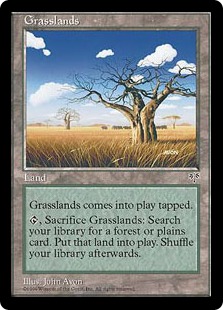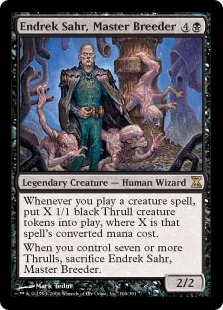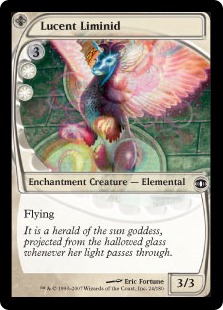
Grass Clippings
By Eli Shiffrin, Brian Paskoff, and Aaron Stevenson
By Eli Shiffrin, Brian Paskoff, and Aaron Stevenson

My back yard
I always seem to be working on Cranial Insertion in the midst of some flurry of other activity. This week, it's my yardwork. It seems that when I wasn't paying attention, parts of my lawn turned brown, other parts grew high enough that the city is threatening to fine me, and my hedge ate a cat.
Maintaining a yard is a lot like answering your questions, though. We water the lawn, which is like providing you with knowledge. We pull up the weeds, in the same way that we try to get rid of the misconceptions you have. And when the grass is green and growing tall, we cut it down with a large blade.
I'm not really sure where I was going with that last part.
Anyway, if you have some weeds or you need to be watered, send your questions to [email]cranial.insertion@gmail.com[/email], and in the meantime, we'll take a look at what the lawnmower spat out:
Q: Can I attack with a tapped creature if it has vigilance?
A: No. Vigilance just means that it doesn't tap when it attacks; it doesn't remove the requirement that attacking creatures be untapped.
Q: If I sacrifice Yavimaya Elder to draw a card, which resolves first: the activated or triggered ability? Can I choose?
A: There's no choice here. The first step of playing an activated ability is to put it on the stack. Paying the cost of that ability comes later, and when that's put on the stack, it goes on top of the activated ability that's already there. You'll search for two basic lands, then draw a card, which is probably what you want to do anyway.
Q: Does Ember Gale deal 2 damage to creatures that are both white and blue?
A: No. Ember Gale finds the set of creatures that are white, blue, or both, and deals 1 damage to each creature in the set. The creatures that are both are definitely included but don't take any extra damage.
Q: I've got a Grotesque Hybrid that's been enchanted by Oblivion Ring. On my turn, when I draw a card, can I discard it to the Hybrid and make the Oblivion Ring fall off?
A: You can't play the Hybrid's ability because it's not in play; it's been removed from the game. Oblivion Ring isn't an Aura like Pacifism, where the target remains in play with the enchantment attached to it. It may feel the same, and some players may represent it the same way with their cards, but it's functionally very different.

"At last, I have the power to--
oH, NooOOoOooOoOoOOOo..."
oH, NooOOoOooOoOoOOOo..."
A: Pretty well for you. The converted mana cost of a spell on the stack includes whatever value was chosen for X. The CMC of your wall is 7, so you'll get seven Thrulls.
Not so well for Endrek Sahr. As soon as those Thrulls come into play, they'll tear him apart. Let that be a lesson to you.
Q: I attack with my Empty-Shrine Kannushi and my opponent blocks with his Merrow Witsniper. I want to flash in my Faerie Harbinger so that his merfolk won't deal damage to my cleric, but my opponent thought his creature wouldn't be able to block mine any more.
A: It's true that one of the things protection will stop is blocking, but that's the declaration of blocking creatures. Your opponent checks the legality of blockers when he declares them. If your attacker gains protection after that, the blocking assignment remains unchanged; they're still locked in mortal combat. Your creature will deal its damage, and the damage assigned to it will be prevented by its protection.
Q: I play Worldly Counsel with only two lands in play, but one of them is an Island enchanted by Lush Growth. Do I get to look at the top two or four?
A: Either three or four, depending on what that other land is. The Island enchanted by Lush Growth no longer has the Island land type; its subtypes were overwritten by the Lush Growth's effect.
That said, it's the number of different land types that's important here; the number of lands you control is largely irrelevant. You have three different basic land types on the land you told me about. If the other land is an Island or a Swamp, you have a total of four.
Q: If I have a card imprinted on my Panoptic Mirror and I use the Mirror on my upkeep, can I copy that spell with Mirari?
A: Sure! The Mirror's ability lets you play a copy of a card, and because that's a spell and you're playing it, the Mirari will trigger.
Q: I read on a recent CI that if I Swerve a Cryptic Command to target the Swerve itself, the Command fizzles because its target is gone by the time it resolves. But I also read that cards like Hex can lose targets before they resolve and still somehow resolve. Why this discrepancy?
A: The difference is that Cryptic Command (usually) has only one target, but Hex has more than one. A spell will be countered on resolution if all of its targets are illegal. If even one target remains legal, the spell will not be countered.
Quote fromIf the spell or ability specifies targets, it checks whether the targets are still legal. [...] The spell or ability is countered if all its targets, for every instance of the word "target," are now illegal. If the spell or ability is not countered, it will resolve normally, affecting only the targets that are still legal.
Q: I played a turn one Simic Initiate and turn two Dream Stalker, putting the graft counter on the Stalker and bouncing the Initiate to my hand. My opponent said I couldn't do both. Why can't I?
A: It's because as soon as you remove the counter, the Initiate is a dead, deceased corpse and goes to the graveyard before the Stalker can bounce him. Likewise, as soon as you bounce the Initiate, the counter goes away and can't be moved to the Stalker. You can do one or the other, but not both.
Q: If my opponent has a Spikeshot Goblin in play and plays Blanchwood Armor targeting it. I respond by playing Word of Seizing on the Goblin. What happens to the Armor?
A: It still has a legal target, so it resolves and enchants that target. Now you've got your opponent's Goblin suited up in your opponent's Armor. As a bonus, the Armor is still controlled by your opponent, so it counts the number of Forests he controls, which, if he's playing that card, is likely to be high.
Q: Does Blood Tyrant trigger when a player loses a Magic subgame created by Shaharazad?
A: It will if it's in the subgame. If it's in the main game or, Garfield forbid, another subgame, it won't see the events occurring in the current subgame.
Q: If I control both Wild Pair and Vhati il-Dal and I play another creature, can I respond to the Wild Pair trigger by using Vhati il-Dal and change what I get to search for?
A: Sure. You don't calculate total power and toughness until the Wild Pair trigger resolves. You can respond to that trigger with any number of things that will change the result.
Q: I've got myself a Reveillark in play and a bunch of yummy 2-power creatures in my graveyard. I play Nova Chaser but my opponent kills it in response to its champion ability. Will I still get to remove my Lark? Is this like those Faceless Butcher shenanigans where it gets removed from the game forever?
A: It can be shenanigous if you want it to be. The champion trigger is an optional ability that lets you remove an appropriate permanent from the game. If the original creature is no longer in play, you usually won't want to remove anything, but you still have that option.
If you do remove the Reveillark, it'll be gone forever, since the trigger that would return it resolved before there was anything to return. Still, if you get some delicious creatures out of the deal, it may be worth it.

No, we are not answering
questions about Bella Sara.
questions about Bella Sara.
A: No. The Celestial Ancient will trigger when the Liminid is played, and that ability will resolve before the Liminid does, so the pretty horse won't be in play to get a counter.
Q: Can Runed Halo stop damage from Banefire?
A: It can't prevent the damage, but it shouldn't have to. One of the things that the Halo's protection does for you is to make you an illegal target for sources with the chosen name. Your opponent can't even send a Banefire in your direction while the Halo is around.
If he manages to get around that (say, by targeting something else, then using a damage redirection effect), Runed Halo won't help. It tries to prevent damage from Banefire, but assuming X is high enough, the damage can't be prevented.
Q: My opponent was at 1 life with a Fire-Fiend Ogre as his only creature. I activated my Phyrexian Totem and attacked. He blocked and then immediately played Agony Warp on my Totem. I reactivated my Totem before damage, making it a 5/5 again so it would live and kill him with trample damage. Does this work?
A: Yes, it does. The Agony Warp and the Totem activations are all in the same layer, so they're applied in timestamp order. The last Totem activation will effectively overwrite the Agony Warp's effect, making it a very deadly 5/5.
Q: We later tried to decide when my opponent should have played the Warp. It seemed like the only time that would save him is after first strike damage had resolved but before regular damage. Is this correct?
A: Quite right. An Agony Warp pointed at a Totem with 4 damage already on it will doom it. It dies immediately when that spell resolves, before you can activate it again, and activating in response to Agony Warp does no good. And, of course, it'll have to die before its damage goes on the stack, else its demise won't save your opponent.
Q: What's the difference between "Player can't gain life" from Everlasting Torment and "If a player would gain life that player gains no life instead" from Sulfuric Vortex?
A: A couple of subtle things. The latter is a replacement effect while the former is a static ability that modifies the rules of the game. With the Vortex, there's a choice of which effect gets applied first when there are other relevant replacement effects, such as those from Nefarious Lich or Rain of Gore. With the Torment, those other effects can never be applied, because the effect they'd replace just can't happen.
Also, you can pay the alternate cost of Reverent Silence if the Vortex is in play, but the same is not true with the Torment.
Q: What happens if I hit my opponent with Gerrard's Verdict and he has a Library of Leng in play? Does he have to show me what he discards so that I know how much life I gain?
A: No, the cards go straight from one hidden zone (the hand) to another (the library) so they won't get revealed in between. But you're right; you do need to know how many land cards were discarded. So, in a sanctioned tournament, you'll call a judge over to look at the cards your opponent discards to his library and tell you how many were lands. In a non-sanctioned event, you could have him tell you, or call in a neutral third party to confirm.
Nobody likes the fact that it has to be done this way, but there aren't very many scenarios where it's required.
Q: A while ago you mentioned that spells from Eye of the Storm are played, but I thought that copying a spell put it right on the stack without it being played?
A: When you create a copy of something, it's created in the same zone as the original unless otherwise specified. So when a copy of a spell is created, it's put in the same zone as the original: the stack. That follows almost none of the steps of playing a spell, so it's clearly not the same thing.
The key here is that Eye of the Storm doesn't create a copy of a spell, it creates a copy of a card. Specifically, it makes a copy of a card that's removed from the game and grants you the ability to play the copy from that zone.
You're all looking much healthier now! Maybe next week we can spread some fertilizer.
Comments